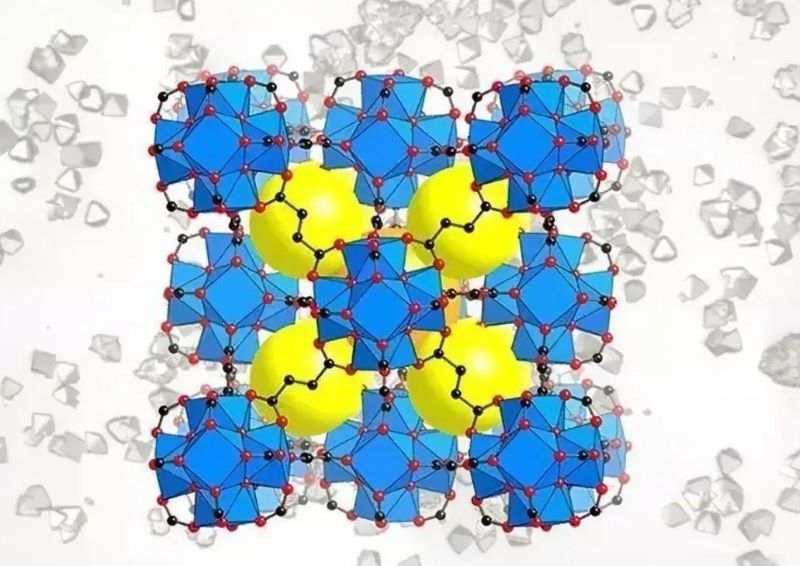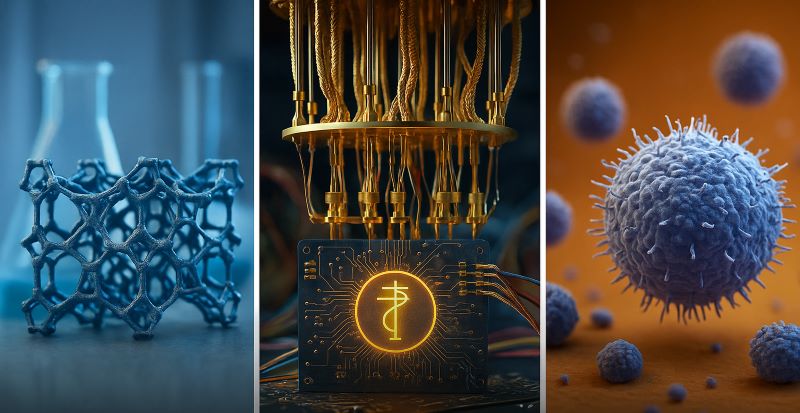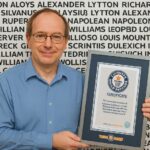During the highly prestigious Nobel Week, the three disciplines of physics, chemistry and physiology/medicine successively announced the Nobel laureates of this year, showcasing the breakthrough power of cutting-edge research in natural sciences: from the new “sharp tools” of decarbonization technology, to the verification of quantum mechanics at the macroscopic scale, and to the profound insights into the balance mechanism of the immune system, humanity’s understanding of the world has become clearer at this moment.
According to the latest news report, in the field of medicine, the Nobel Committee announced on October 6th that the 2025 Nobel Prize in Physiology or Medicine was awarded to Mary E. Brunkow, Fred Ramsdell, and Shimon Sakaguchi. In recognition of their pioneering research on “peripheral immune tolerance”. Three scientists have revealed the key immune cells called “regulatory T cells” (Tregs) and the mechanism of action of their controlled gene FOXP3, thereby explaining why the immune system does not attack its own tissues. Its research achievements are regarded as the cornerstone for understanding autoimmune diseases, cancer immunotherapy, and organ transplant tolerance.
Immediately following, on October 7th, the Nobel Prize in Physics was awarded to John Clarke, Michel H. Devoret, and John M. Martinis. Through experimental verification of macroscopic quantum tunneling and energy level quantification in superconducting circuits, they pushed quantum behavior to the macroscopic scale. It has laid an empirical foundation for emerging technologies such as quantum computing, quantum sensors, and quantum encryption. The committee believes that the discovery of these “macroscopic quantum phenomena” has achieved a leap from the microscopic world to practical technology.
Finally, on October 8th, the Nobel Prize in Chemistry was shared by three scientists: Susumu Kitagawa, Richard Robson, and Omar M. Yaghi. They won the award for developing Metal-Organic Frameworks (MOFs for short), a new type of material with a huge pore structure. MOFs can store a large amount of gas or molecules in an extremely small volume, just like a “molecular backpack”. Their potential covers areas such as efficient carbon capture, air pumping, pollutant interception, and drug release. Therefore, they are hailed as the representative of functional materials in the 21st century.
These three major awards unfold continuously over time, echo each other in form, and interweave several major themes of contemporary scientific exploration in content: climate response, quantum technology, and life mechanisms. Below, we will explore the core contributions and future significance of the three major awards.
MOFs: A New Frontier in Decarbonization and Clean Technologies
The MOFs developed by Kitagawa, Robson, and Yaghi have an extremely high specific surface area (with a very large surface area to volume ratio), enabling a very small amount of material to accommodate a large number of molecules flowing into its internal pores. This structured “customizable channel” brings unprecedented flexibility to gas capture, selective adsorption, and molecular sieve separation. Take carbon dioxide capture as an example. MOFs can efficiently screen CO₂ molecules to enter the pores while repelling common gases such as nitrogen and oxygen, achieving carbon capture and storage. It is also entering the experimental or even commercialization stage in areas such as industrial flue gas purification, air dehumidification, and hydrogen storage.
In the current context where the threat of climate change is becoming increasingly prominent, the practical application of MOFs may become a key part of decarbonization technology. They can act as efficient “sponges” to remove greenhouse gases and support carbon capture/utilization/storage (CCUS) projects. It can also recover water from the air in extremely arid regions, providing the possibility for ecological replenishment. The Nobel Committee pointed out that such materials are expected to address a series of the greatest challenges facing humanity, including climate, pollution, and clean energy.
Of course, at present, MOFs still have bottlenecks in terms of stability, large-scale production, cycle life, and cost control, and they require the continuous efforts of the scientific research community and the industrial sector to transform them into practical applications.

Macroscopic Guantum: Paving the Way for Guantum Technology
The three Nobel Prize winners in Physics will be regarded as pioneers in advancing quantum science from concept to engineering practice. In the past, it was widely believed that quantum mechanics was only applicable to microscopic particle systems: electrons, photons, atoms, etc. However, the experiments of Clarke, Devoret, and Martinis enabled macroscopic devices to exhibit quantum properties such as tunneling and energy level quantization through superconducting circuits, breaking the scale constraints. This means that quantum effects can be “amplified” for use in actual devices.
At the technical level, these experiments laid the physical foundation for key elements such as qubits, quantum control and readout, and quantum interference. It is of milestone significance for the feasibility of future technologies such as quantum computers, quantum communications, and quantum sensors. At present, research institutions and enterprises around the world are using these experiments as springboards to accelerate the construction of scalable quantum architectures. It can be said that this Nobel Prize in Physics is an affirmation of “making quantum truly available”.
Unveiling the “Code” of the Immune System: Regulatory T Cells and FOXP3
In terms of medical awards, the research by Brunkow, Ramsdell, and Sakaguchi has revealed a key “safety mechanism” of the human immune system – immune tolerance. They found that regulatory T cells, through the control mechanism of the FOXP3 gene, inhibit the immune system’s attack on its own tissues, thereby preventing autoimmune diseases. Previously, the immunology community believed that “the elimination of harmful immune cells” was the only way to maintain safety, but this assumption overlooked the significance of “inhibitory mechanisms”.
These findings not only deepen our understanding of immune balance but also provide new ideas for the treatment of various diseases. For instance, in autoimmune diseases (such as type 1 diabetes, multiple sclerosis, lupus erythematosus, etc.), immune tolerance may be restored by regulating the Tregs or FOXP3 pathways. In terms of tumor treatment, reasonable inhibition of Treg activity is conducive to enhancing anti-tumor immunity. In addition, the management of immunosuppression after organ transplantation may also be carried out more precisely and safely through this mechanism.
The Convergence of the Three Awards: A Major Trend in Scientific Progress
The commonality of this year’s Nobel Prizes lies in the fact that they are not isolated achievements but rather a collaborative portrayal of attacks launched by different fields on the core challenges of humanity. MOFs offer possibilities for addressing the climate crisis, quantum physics drives future technological leaps, and immunology reveals the internal mechanisms of health and disease. Together, they paint a new picture of the scientific frontier: an integrated perspective spanning materials, technology, and life is taking shape.
In the future, MOFs may be combined with quantum materials for use in intelligent molecular filtration systems or in enzyme-catalyzed reactions. Quantum technology may assist in analyzing the quantum effects between biological macromolecules. A deeper understanding of the immune mechanism may also achieve breakthroughs through quantum sensing or nanomaterial-assisted therapy. Although the three major awards seem to belong to different disciplines, they all echo the scientific approach of “from microstructure to the macroscopic world, from molecular mechanisms to system applications”.
Behind this series of honors lies the accumulation of wisdom and experimental exploration across countless eras, as well as the daily dedication of the global scientific community. The announcement of the Nobel Prize in 2025 reminds us that on the three fronts of climate change, cutting-edge technology, and life and health, humanity’s answers are gradually being unlocked.













Leave a comment